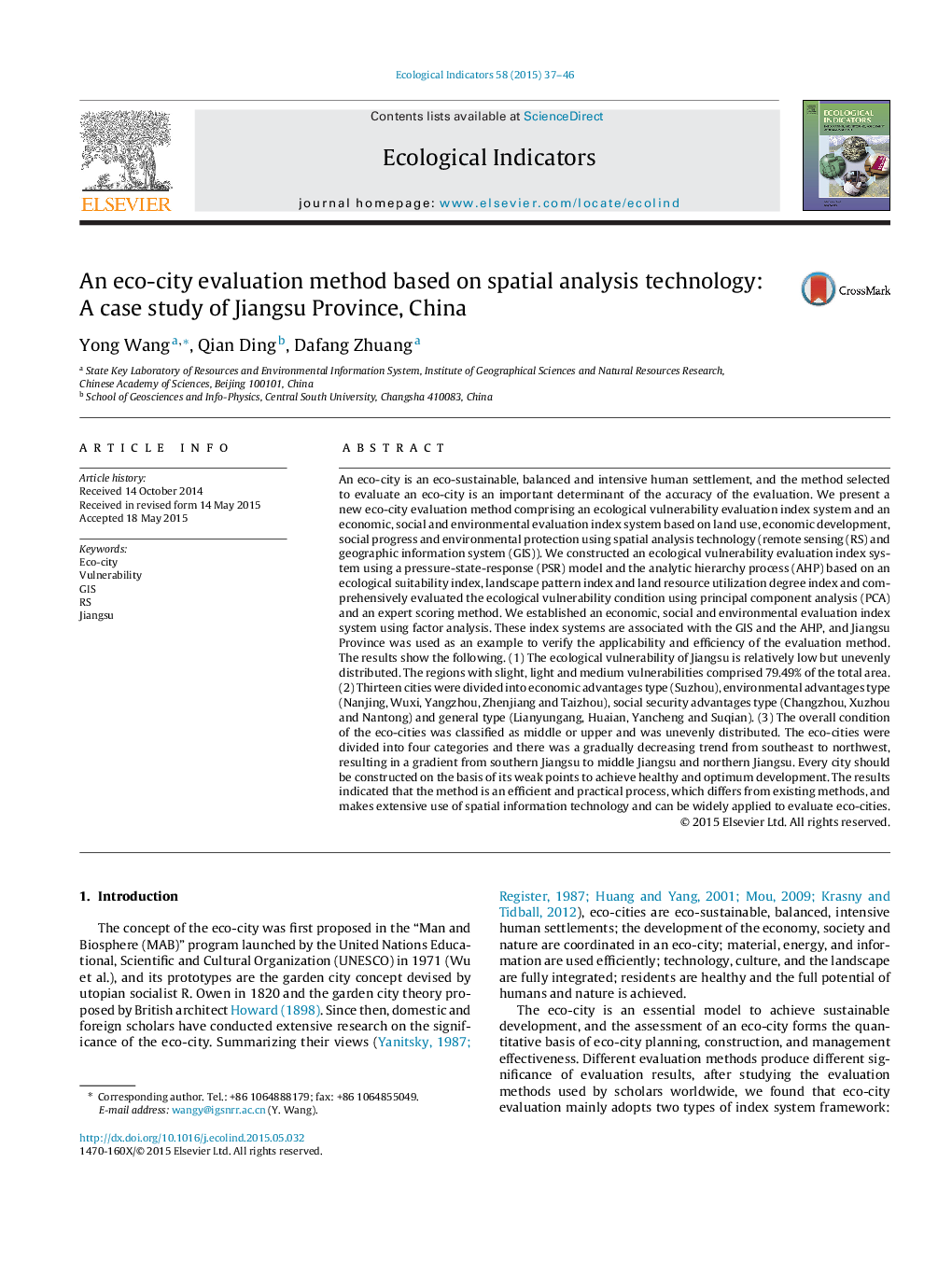| کد مقاله | کد نشریه | سال انتشار | مقاله انگلیسی | نسخه تمام متن |
|---|---|---|---|---|
| 6294217 | 1617143 | 2015 | 10 صفحه PDF | دانلود رایگان |
- We present a new efficient, widely applicable eco-city evaluation method.
- The method includes two parts and uses spatial analysis technology extensively.
- It has significant advantages compared with other eco-city evaluation methods.
- Jiangsu province was overall in medium to high eco-level evaluated by this method.
An eco-city is an eco-sustainable, balanced and intensive human settlement, and the method selected to evaluate an eco-city is an important determinant of the accuracy of the evaluation. We present a new eco-city evaluation method comprising an ecological vulnerability evaluation index system and an economic, social and environmental evaluation index system based on land use, economic development, social progress and environmental protection using spatial analysis technology (remote sensing (RS) and geographic information system (GIS)). We constructed an ecological vulnerability evaluation index system using a pressure-state-response (PSR) model and the analytic hierarchy process (AHP) based on an ecological suitability index, landscape pattern index and land resource utilization degree index and comprehensively evaluated the ecological vulnerability condition using principal component analysis (PCA) and an expert scoring method. We established an economic, social and environmental evaluation index system using factor analysis. These index systems are associated with the GIS and the AHP, and Jiangsu Province was used as an example to verify the applicability and efficiency of the evaluation method. The results show the following. (1) The ecological vulnerability of Jiangsu is relatively low but unevenly distributed. The regions with slight, light and medium vulnerabilities comprised 79.49% of the total area. (2) Thirteen cities were divided into economic advantages type (Suzhou), environmental advantages type (Nanjing, Wuxi, Yangzhou, Zhenjiang and Taizhou), social security advantages type (Changzhou, Xuzhou and Nantong) and general type (Lianyungang, Huaian, Yancheng and Suqian). (3) The overall condition of the eco-cities was classified as middle or upper and was unevenly distributed. The eco-cities were divided into four categories and there was a gradually decreasing trend from southeast to northwest, resulting in a gradient from southern Jiangsu to middle Jiangsu and northern Jiangsu. Every city should be constructed on the basis of its weak points to achieve healthy and optimum development. The results indicated that the method is an efficient and practical process, which differs from existing methods, and makes extensive use of spatial information technology and can be widely applied to evaluate eco-cities.
Journal: Ecological Indicators - Volume 58, November 2015, Pages 37-46
